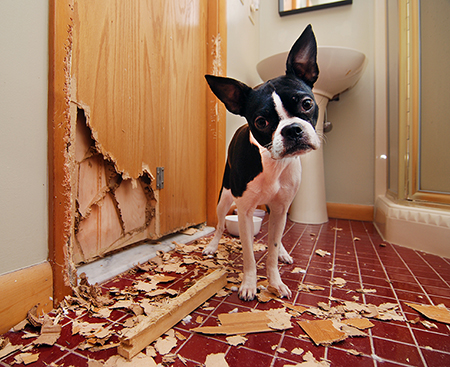As I’m sure you know, pets are a big business in the apartment industry. Not only does a pet-friendly community tap a larger rental pool, but residents in pet-friendly buildings stayed an average of 46 months, compared to 18 months in rentals that prohibit pets, according a study by Firepaw, a non-profit that promotes animal welfare.
In addition, there’s the ancillary income generated by pet-friendly buildings. Depending on the state, most apartment communities charge a non-refundable one-time pet fee upon move-in that can range from $150 to $500 per pet, as well as monthly rent for a pet, which is typically $15 to $50 per pet.
But before allowing any pets in your building, you must put in place certain rules and regulations to protect both ownership and residents, as well as the property itself. At a minimum, here are six steps property managers and owners should take to protect these interests—and to avoid liability for any damage to person or property the pets may cause.
1. Require residents to register their animals. This ensures that management will be aware of pets living at the community, as well as the age, sex and breed of the animal. It also allows you to collect a pet deposit and additional rent due for any animals on the premises. Renters should also be informed that it is expected that all pets be spayed or neutered and have proof of proper vaccinations. This helps create a safer environment in the community and prevents additional animals being born in the unit(s).
2. Make sure you have breed restrictions in place. Common prohibited dog breeds include pit bulls, Rottweilers, German Shepherds, Doberman Pinschers, Chows and wolf hybrids. The one caveat to keep in mind here relates to special rules that apply to support animals for those with disabilities. I recommend that owners and managers consult with legal counsel regarding any questions as these animals may be protected under federal and state law.
3. Require renters to maintain a rental insurance policy that provides liability coverage in the event of a bite or other incident involving a pet. The renter should always have a policy, whether they have a pet or not, but it's management's duty to make sure of that. Most, if not all, apartment managers require the tenant to provide proof of renter’s insurance when they move in.
That said, in the event of a bite or other incident, the management company and owner of the building could likely be named as defendants, but if the injury were caused by the renter’s negligence and there was a rental policy in place, then the claim would be filed under the resident’s policy. Without that policy, management and ownership should still try to hold the pet owner liable, since he or she was negligent, but it leaves management and ownership potentially exposed.

Getty Images
4. Have renters sign a lease rider that includes rules governing the pet.
This is especially important at popular pet-friendly buildings like Halsted Flats, an apartment community in Chicago’s Lakeview neighborhood managed by RMK, where 90 percent of units have pets. At all properties managed by RMK, including Halsted Flats, we use a lease rider that lays out provisions on additional monthly rent, the non-refundable pet fee, breed restrictions, leash requirements, prohibitions against certain animals and requirements that pets be housebroken and do not disturb other residents, among other rules. The rider also states that violations of these rules will result in the permanent removal of those pets.
5. Request that pet owners have their pets micro-chipped or wear ID tags with the owner’s name, address and telephone number.
This makes it easier to identify the owner of any pets that might be loose on the property.
6. Keep pet information current.
The lease rider should compel residents to keep pets up-to-date on rabies shots and other vaccinations required by local ordinance and provide management with proof this was done. It should also highly recommend that pet owners use flea and tick control on a regular basis to ensure these pests do not end up in units.
While most pet-owning residents take proper care of their animals with respect to their fellow neighbors and their building, all apartment owners and managers need to plan for those who don’t. By properly educating new renters on the rules and regulations in place in your pet-friendly community—and, perhaps more importantly, explaining the reasoning behind these rules—it’s likely that your community will remain a peaceful and safe environment for both humans and animals.
Follow Hashtags: #livinginvirginia #lynnasells #realtor



 Lynna Hall
Lynna Hall 